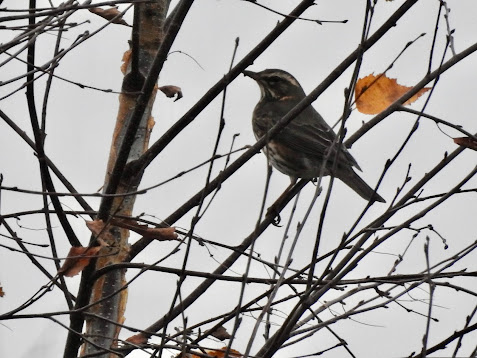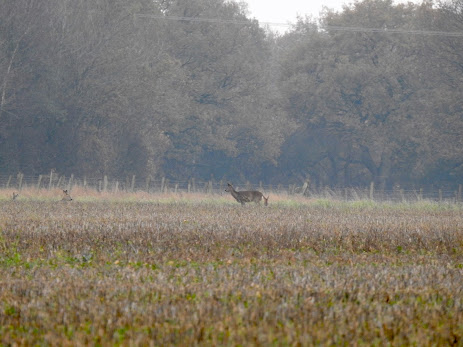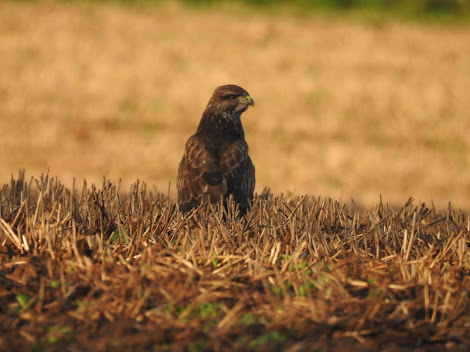I think there are eleven Worcestershire and Warwickshire Nature Trust reserves within The Circle, and this morning I decided to visit one of them. All of these reserves were established to protect a diminished fragment of natural habitat, and are therefore mainly of botanical or entomological interest. The nearest to being a bird reserve is Feckenham, and you can tell this because it has two hides no less.
The blurb on the Worcestershire Trusts website describes Feckenham Wylde Moor as a fen peat bog. It had been drained in 1850, but over the last 40 years valiant efforts have been made to restore it.
I made my way to the main hide and found it occupied by a lady birder. We each donned our face masks, resulting in instant fog as we both wore glasses. Before us was a small pool occupied by seven Mallard and nothing else.
 |
| Hide 1 |
I learned that the main attraction was the occasional appearance of a Kingfisher, but in the ten minutes before boredom set in none appeared. I decided to get out and start exploring.
I thoroughly enjoyed the next two hours following the path through gloopy peat marsh, scanning the remarkably large reed beds, and then making careful progress through the alder woodland which surrounds the place.
The nearest I came to a "good bird" was a male Stonechat, but I could easily imagine all manner of marshland birds might reward regular visits.
 |
| Stonechat |
Other birds seen included at least 20 Goldfinches, a few Siskins, a couple of Redpolls, and plenty of Redwings and Blackbirds.
 |
| Reserve management in action |
 |
| The view from Hide 2 |
Once installed in the second hide I was not distracted by any birds, giving me the opportunity to contemplate how to shoehorn the next goose into my list of birds recorded within the Circle since the year dot.
No I can't think of any good way to introduce:
Barnacle Goose - It is doubtful whether any of the Barnacle Geese seen since the first, at Hewell Lake on March 15 1975, can be considered to be anything other than an escape.
Each winter thousands head into western Scotland from the arctic, while thousands more winter in the low countries. Some of the latter make the hop across the North Sea into East Anglia, particularly in cold weather, and it is these birds which might just have occurred naturally within the Circle.
The best candidates are a party of 24 discovered at Earlswood Lakes on December 6 1980. There had been an influx into eastern Britain at the time and surely these birds were part of the movement. Unfortunately they were described as being rather tame, and remained in ever diminishing numbers until March 4 1981. Let's just say the jury is out.
Barnacle Geese, as well as being frequent escapes, also breed in parts of England, and perhaps the flock of 10 seen flying over the M42 near Hopwood on June 7 1998 were feral birds rather than being part of a mass break out from a collection.
Since the first published record, singles or pairs were seen at various waters within the Circle in most years between 1979 and 1997, and again in most years from 2008 to 2019.
My only Morton Bagot record flew over in a flock of Canada Geese on September 18 2016. Obviously wild....ahem.





























